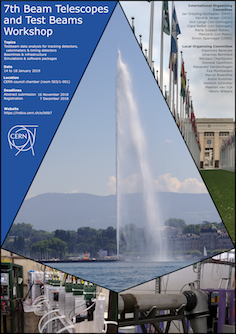Speaker
Description
Embedded pitch adapters (EPA) are used to adjust the bonding pattern of segmented sensors to the bonding pattern of read-out chips. In this way the sensor geometry can be made independent of the bonding pattern of the read-out chips. This can be very useful for challenging sensor geometries like radial strip sensors which are used in the end-caps of the trackers of several experiments and for prototyping. EPAs are realized by depositing a SiO layer on top of the processed sensor and a second metal layer on the SiO which connects the sensor channels to the bonding pads matching the bonding pattern of the read-out chip. However, the additional SiO and the second metal layer may lead to efficiency loss due to coupling between the bulk and the second metal layer and between the first and the second metal layers increasing e.g. the inter-strip capacitance.
For the high-luminosity upgrade of the ATLAS inner tracker, silicon strip sensors with EPA structures have been investigated as an approach to mitigate the challenging wire-bonding in the end-cap region due to different bonding pattern of the sensors and the readout chips. Prototype end-cap silicon strip sensors with various EPA structures have been produced by Centro Nacional de Microelectronica (IMB-CNM, CSIC), Barcelona, Spain. A non-irradiated sensor and a sensor irradiated to $\Phi_{eq}=10^{15}\,$cm$^{-2}$ with MeV protons were subjected to test beam at DESY using a 4.4 GeV electron beam with a EUDET-type pixel telescope. First results of the tracking efficiency in the region of the EPA compared to the standard region with only one metal layer as well as a study of the coupling between the second metal layer and the bulk will be presented.
